#Import and Export Data
Explore tagged Tumblr posts
Text
Explore reliable Import and Export Data India to track trade trends, find buyers and suppliers, and grow your business globally with ExportImportData.in.
#Import and Export Data#India Import Export Data#Import and Export Data India#India Import and Export Data
0 notes
Text
Cách tìm kiếm data xuất nhập khẩu hiệu quả
Dữ liệu data xuất nhập khẩu giúp các doanh nghiệp có cái nhìn tổng quan về tình hình xuất nhập khẩu, hỗ trợ hiệu quả việc tìm kiếm thêm khách hàng tiềm năng, đồng thời dễ dàng theo dõi các hoạt động của đối thủ cạnh tranh.
Trong tất cả các lĩnh vực kinh doanh, khách hàng đóng vai trò quan trọng. Đây là nhân tố giúp doanh nghiệp phát triển, mở rộng hoạt động kinh doanh và thu về doanh thu. Đối với lĩnh vực đặc thù như xuất nhập khẩu, nếu bạn không biết cách tìm kiếm khách hàng sẽ rất khó đứng vững trên thị trường. Vậy data xuất nhập khẩu là gì? Có những cách tìm kiếm khách hàng xuất nhập khẩu nào?

Data xuất nhập khẩu là gì?
Data xuất nhập khẩu được hiểu chính là tập hợp thông tin của khách hàng đang có nhu cầu xuất nhập khẩu hàng hóa, có thể bao gồm:
Khách hàng có nhu cầu xuất khẩu hàng hóa từ Việt Nam ra nước ngoài
Khách hàng có nhu cầu nhập khẩu hàng hóa từ nước ngoài về Việt Nam.
Tìm kiếm dữ liệu xuất nhập khẩu chính là tìm ra thông tin liên hệ, có thể là họ tên, email, số điện thoại... của người ra quyết định cuối cùng của các doanh nghiệp đang có nhu cầu xuất nhập khẩu. Tùy vào quy mô, tính chất khác nhau của doanh nghiệp, hàng hóa xuất nhập khẩu mà những người này có thể nắm giữa các chức vụ khác nhau trong công ty.
Tại sao phải tìm kiếm data xuất nhập khẩu?
Thời kỳ hội nhập quốc tế, ngày càng nhiều hiệp định thương mại được ký kết giữa các quốc gia trên thế giới, trong đó có cả Việt Nam. Nhờ vậy, việc trao đổi buôn bán hàng hóa giữa các quốc gia ngày càng dễ dàng hơn và là một hoạt động không thể thiếu với nhiều doanh nghiệp sản xuất.
Tuy nhiên, để cạnh tranh và phát triển, việc tìm kiếm khách hàng xuất nhập khẩu là điều cần thiết. Nắm giữ data xuất nhập khẩu chất lượng sẽ là cơ sở để gia tăng doanh thu cho doanh nghiệp và phát triển vững chắc trong ngành này. Biết cách tìm kiếm khách hàng xuất nhập khẩu, doanh nghiệp của bạn sẽ:
Chọn lựa được thị trường mục tiêu vì có data khách hàng bạn sẽ xây dựng được chiến lược kinh doanh và có thể quyết định bán hàng vào đâu và khi nào.
Theo dõi data xuất nhập khẩu của đối thủ cạnh tranh để có các chiến lược kinh doanh phù hợp
Xây dựng được danh sách khách hàng tiềm năng dựa trên các cụm từ tìm kiếm, khu vực địa lý, thông tin có sẵn và nhiều tùy chọn có thể lọc khác giúp bạn có một danh sách data chất lượng
Data khách hàng tìm kiếm được sẽ cung cấp cho bạn các thông tin hữu ích như: tên đơn vị xuất khẩu, nhập khẩu; Mô tả mặt hàng, số lượng, giá cả; Các điều kiện về giá, điều kiện giao hàng; Tên cảng đi, cảng đến hay nước xuất xứ, nước hàng đến… Từ đó dễ dàng xác định thị trường mục tiêu hơn.
Cách tìm kiếm data xuất nhập khẩu hiệu quả
Là một nhân viên tư vấn, làm việc trong lĩnh vực xuất nhập khẩu, bạn có thể tìm kiếm data khách hàng qua các cách sau sau đây:
Tìm kiếm khách hàng theo mục tiêu
Đây là cách giúp bạn dễ dàng tìm kiếm nguồn data xuất nhập khẩu, nhất là khi bạn nắm bắt được rõ điểm mạnh, tuyến mạnh và dịch vụ mà công ty mình đang mạnh nhất. Từ những thông kiến thức đã nắm hãy gạch đầu dòng những thông tin liên quan để có kế hoạch tìm kiếm cụ thể.
Chẳng hạn ông ty bạn có lợi thế về tuyến châu Á, nhất là Trung Quốc thì hãy tập trung tìm kiếm khách có hàng hóa đi các tuyến này. Chẳng hạn hàng nhập khẩu Trung Quốc phổ biến hiện nay là thời trang, hàng tiêu dùng, công nghệ điện tử,… bạn hãy tìm khách hàng đang kinh doanh mặt hàng này.
Tìm kiếm khách hàng theo dữ liệu xuất nhập khẩu
Các công ty xuất nhập khẩu sẽ có thông tin về mặt hàng họ đang kinh doanh. Là nhân viên sale bạn hãy tận dụng nguồn thông tin như mặt hàng xuất khẩu, danh sách, danh bạ công ty xuất nhập khẩu… sau đó sử dụng công cụ tìm kiếm của Google hoặc các trang mạng xã hội… để tiếp cận PIC - Person In Charge (người ra quyết định cuối cùng) của doanh nghiệp khi có nhu cầu xuất nhập khẩu.
Khi tìm kiếm theo cách này để chi tiết, dễ dàng và hiệu quả nhất bạn nên tìm kiếm theo khu vực tỉnh thành, vùng miền. Chẳng hạn, công ty ở Hà Nội hoặc có kho bãi ở Hà Nội thì bạn nên tìm kiếm khách hàng tại Hà Nội trước, sau đó đến các tỉnh lân cận. Cách này giúp bạn dễ dàng quản lý điều hành vận tải và chăm sóc khách hàng tốt hơn. Đồng thời còn tạo sự tiện lợi và tiết kiệm chi phí cho khách hàng khi vận chuyển hàng hóa. Qua đó tăng uy tín cho doanh nghiệp của bạn.
Tìm kiếm khách hàng theo mùa
Rất nhiều nhân viên sale bỏ qua cách tìm kiếm này nhưng đây là một cách tìm kiếm data khách hàng khá hiệu quả, nhất là tìm kiếm khách hàng xuất nhập khẩu.
Phương pháp này giúp bạn tìm đúng đối tượng khách hàng đang có nhu cầu vào thời điểm hiện tại. Chẳng hạn, mùa đông chủ yếu là các mặt hàng quần áo mùa đông, máy sưởi, lò vi sóng, bình nóng lạnh... thì bạn hãy tìm đúng mặt hàng đang xuất nhập khẩu nhiều nhất tại thời điểm. Sau đó, đánh vào mặt hàng đó trước để kịp mùa.
Ngoài dựa vào tính mùa bạn cũng có thể tìm thêm vào các doanh nghiệp kinh doanh mặt hàng xuất nhập khẩu quanh năm để xây dựng một nguồn khách hàng thường xuyên và trung thành.
Các kênh tìm kiếm khách hàng xuất nhập khẩu
Đối với việc tìm kiếm khách hàng xuất nhập khẩu, bạn có thể áp dụng tìm kiếm trên các kênh sau đây:
Tìm kiếm qua hội chợ, triển lãm
Khi áp dụng cách tìm kiếm này bạn chỉ cần cập nhật thông tin về các sự kiện triển lãm, hội chợ về ngành hàng của bạn tại thị trường xuất nhập khẩu mục tiêu, sau đó đăng ký tham gia. Bạn có thể tham gia các hội chợ, triển lãm trong nước và quốc tế. Một số hội chợ tổ chức thường niên như: Hội chợ hàng nhựa, máy móc sản xuất tại HCM; hội chợ hàng thủ công mỹ nghệ; hội chợ Expo; Vietbuild...
Ưu điểm khi tìm kiếm khách hàng xuất nhập khẩu theo cách này là tiếp cận được trực tiếp với khách hàng tiềm năng nên mang về nguồn data chất lượng. Đặc biệt, khả năng chuyển đổi thành khách hàng là khá lớn vì bạn tiếp cận trực tiếp, giao tiếp và tư vấn trực tuyến.
Tìm kiếm trên mạng internet
Mạng internet là kênh tìm kiếm khách hàng hiệu quả mà bạn nên biết tận dụng. Khi tìm kiếm khách hàng theo kênh này bạn có thể lựa chọn một trong các cách sau đây hoặc phối kết hợp các cách để có nguồn data chất lượng.
- Tìm kiếm trên các trang web danh bạ công ty: Tại Việt Nam bạn có thể tìm tới kênh trangvangvietnam.com, hosocongty.vn... để tìm các doanh nghiệp mà bạn mong muốn. Tại các kênh này đều cung cấp ô search để bạn tìm kiếm dễ dàng dựa vào tên công ty, ngành nghề, sản phẩm, tỉnh thành, vùng miền... Sau khi có kết quả về một hoặc danh sách nhiều công ty, bạn hãy lấy số điện thoại hoặc kênh liên hệ khác để giới thiệu dịch vụ. Lưu ý trước khi liên hệ giới thiệu dịch vụ, bạn nên đọc kỹ các sản phẩm mà họ cung cấp, các thành phần sản xuất để chắc chắn hoạt động của doanh nghiệp có liên quan tới xuất nhập khẩu hay không. Như vậy bạn sẽ tư vấn và thuyết phục có kết quả hơn.
- Tìm kiếm trên Google: Google là một kho dữ liệu khổng lồ và bạn có thể tìm kiếm khách hàng dựa vào công cụ tìm kiếm của "gã khổng lồ" này. Để tìm kiếm khách hàng hiệu quả qua kênh này bạn cần chú ý các tiêu chí sau:
Danh sách về công ty xuất nhập khẩu
Các diễn đàn, forum về xuất nhập khẩu
Các hiệp hội xuất nhập khẩu hàng hóa theo từng ngành nghề
- Xây dựng website liên quan đến dịch vụ xuất nhập khẩu: Bạn có thể tìm kiếm data xuất nhập khẩu bằng cách xây dựng website về dịch vụ này. Cách này có thể mang lại nguồn data thực cho bạn nhưng bạn sẽ tốn kém chi phí để xây dựng, am hiểu kiến thức chuyên môn về viết bài thu hút, biết chạy quảng cáo Google Ads, biết tối ưu công cụ tìm kiếm SEO... Cách này không phù hợp với các sale mới vào nghề.
- Tìm kiếm trên mạng xã hội: Facebook, Twitter, Youtube, Linkedin, Tiktok, Instagram... chính là những mảnh đất màu mỡ mà bạn có thể tận dụng để tìm kiếm khách hàng. Theo đó, bạn có thể có thể tìm theo từ khóa tại ô search hoặc tham gia các nhóm/hội chuyên vận chuyển, xuất nhập khẩu, thủ tục hải quan,… Tại các nhóm này sẽ quy tụ khá nhiều doanh nghiệp lĩnh vực xuất nhập khẩu mà bạn có thể tiếp cận, giới thiệu dịch vụ của mình. Để đạt hiệu quả cao cho việc tìm kiếm, bạn có thể lựa chọn chạy quảng cáo trên từng nền tảng mạng xã hội.
Tìm kiếm qua các trang thương mại điện tử B2B
Các trang thương mại điện tử B2B (Business to Business) cũng là kênh hỗ trợ hiệu quả cho bạn trong việc tìm kiếm khách hàng xuất nhập khẩu. Một số trang thương mại điện tử B2B phổ biến hiện nay dành cho việc bán hàng xuất khẩu mà bạn có thể lựa chọn như:Alibaba, E21c, Tradekey, Go4worldbusiness, Tradeindia, Indiamart...
Khi bạn tìm kiếm khách hàng qua kênh thương mại điện tử B2B bạn sẽ đăng ký làm nhà cung cấp trên các kênh này, sau đó đăng thông tin sản phẩm và chờ đợi người mua liên hệ.
Ưu điểm của cách này là bạn có thể tiếp cận được một lượng lớn khách hàng tiềm năng, các khách hàng nước ngoài nhưng nhược điểm là bạn bị động trong việc tìm kiếm. Cách này chủ yếu dành cho những người xuất khẩu, do đó, nếu bạn là sale doanh nghiệp xuất khẩu thì B2B là lựa chọn cực kỳ lý tưởng.
Ngoài các kênh trên đây bạn có thể tìm kiếm khách hàng xuất nhập khẩu qua một số nguồn khác như người thân, bạn bè, đối tác giới thiệu hoặc qua các cơ quan có thẩm quyền như Cục Kiểm dịch thực vật, động vật; Bộ Công thương; Phòng Thương mại và Công nghiệp Việt Nam (VCCI); Cơ quan hải quan; các cơ quan quản lý chuyên ngành xuất nhập khẩu khác. Bởi các doanh nghiệp xuất nhập khẩu muốn kinh doanh phát triển đều phải được đăng ký tại cơ quan có thẩm quyền.
Các kỹ năng cần trau dồi khi tìm kiếm khách hàng xuất nhập khẩu
Để đạt hiệu quả cao trong việc tìm kiếm khách hàng tiềm năng cũng như biến khách hàng tiềm năng thành khách hàng sử dụng dịch vụ của công ty, bạn cần chú ý trau dồi các kỹ năng sau đây:
Hiểu về thế mạnh hoạt động của công ty: Công ty bạn đang hoạt động mạnh về hàng nhập (inbound) hay hàng xuất (outbound). Nắm rõ được điều này sẽ giúp bạn tập trung vào đối tượng khách chuyển nhập hoặc xuất để tăng tỷ lệ thu hút khách hàng tốt hơn. Ngoài ra, khi hiểu rõ điểm mạnh sẽ giúp sale tự tin trong việc tư vấn cho khách hàng về dịch vụ của doanh nghiệp mình.
Nắm rõ điểm mạnh của công ty: Hãy nắm rõ điểm mạnh của công ty bạn, chẳng hạn như công ty bạn mạnh về tuyến nào? giá các tuyến ra sao?... để tự tin khi tư vấn. Ngoài ra hiểu rõ thị trường tuyến mà doanh nghiệp bạn hoạt động mạnh cũng là căn cứ giúp khách hàng có sự tin tưởng hơn, dễ dàng thuyết phục khách hàng hơn.
Hiểu rõ loại hình dịch vụ công ty đang cung cấp: Công ty bạn cung cấp dịch vụ hải quan hay mạnh về cước/vận tải? Dịch vụ nào là mạnh nhất? Nếu mạnh về cước phí bạn hãy tập trung vào cước để tư vấn cho khách hàng. Nếu công ty của bạn tự chủ về xe đầu, xe tải, xe kéo,… bạn có thể tư vấn vận chuyển về hàng LCL (hàng xuất nhập khẩu), vận tải đường bộ nội địa…
Trau dồi kỹ năng giao tiếp, thuyết phục khách hàng hiệu quả
Data xuất nhập khẩu rất đa dạng, cách tìm cũng phong phú. Bạn có thể tìm kiếm được nguồn khách hàng chất lượng nếu nắm được phương pháp và cách để thuyết phục khách hàng. Hãy trau dồi về kiến thức, kỹ năng sales nhiều hơn để đạt hiệu quả công việc cao nhất. Nếu bạn đang gặp khó khăn trong việc kết nối với khách hàng, hãy liên hệ trực tiếp để được hỗ trợ tư vấn.
0 notes
Text
[T]he Dutch Republic, like its successor the Kingdom of the Netherlands, [...] throughout the early modern period had an advanced maritime [trading, exports] and (financial) service [banking, insurance] sector. Moreover, Dutch involvement in Atlantic slavery stretched over two and a half centuries. [...] Carefully estimating the scope of all the activities involved in moving, processing and retailing the goods derived from the forced labour performed by the enslaved in the Atlantic world [...] [shows] more clearly in what ways the gains from slavery percolated through the Dutch economy. [...] [This web] connected them [...] to the enslaved in Suriname and other Dutch colonies, as well as in non-Dutch colonies such as Saint Domingue [Haiti], which was one of the main suppliers of slave-produced goods to the Dutch economy until the enslaved revolted in 1791 and brought an end to the trade. [...] A significant part of the eighteenth-century Dutch elite was actively engaged in financing, insuring, organising and enabling the slave system, and drew much wealth from it. [...] [A] staggering 19% (expressed in value) of the Dutch Republic's trade in 1770 consisted of Atlantic slave-produced goods such as sugar, coffee, or indigo [...].
---
One point that deserves considerable emphasis is that [this slave-based Dutch wealth] [...] did not just depend on the increasing output of the Dutch Atlantic slave colonies. By 1770, the Dutch imported over fl.8 million worth of sugar and coffee from French ports. [...] [T]hese [...] routes successfully linked the Dutch trade sector to the massive expansion of slavery in Saint Domingue [the French colony of Haiti], which continued until the early 1790s when the revolution of the enslaved on the French part of that island ended slavery.
Before that time, Dutch sugar mills processed tens of millions of pounds of sugar from the French Caribbean, which were then exported over the Rhine and through the Sound to the German and Eastern European ‘slavery hinterlands’.
---
Coffee and indigo flowed through the Dutch Republic via the same trans-imperial routes, while the Dutch also imported tobacco produced by slaves in the British colonies, [and] gold and tobacco produced [by slaves] in Brazil [...]. The value of all the different components of slave-based trade combined amounted to a sum of fl.57.3 million, more than 23% of all the Dutch trade in 1770. [...] However, trade statistics alone cannot answer the question about the weight of this sector within the economy. [...] 1770 was a peak year for the issuing of new plantation loans [...] [T]he main processing industry that was fully based on slave-produced goods was the Holland-based sugar industry [...]. It has been estimated that in 1770 Amsterdam alone housed 110 refineries, out of a total of 150 refineries in the province of Holland. These processed approximately 50 million pounds of raw sugar per year, employing over 4,000 workers. [...] [I]n the four decades from 1738 to 1779, the slave-based contribution to GDP alone grew by fl.20.5 million, thus contributing almost 40% of all growth generated in the economy of Holland in this period. [...]
---
These [slave-based Dutch commodity] chains ran from [the plantation itself, through maritime trade, through commodity processing sites like sugar refineries, through export of these goods] [...] and from there to European metropoles and hinterlands that in the eighteenth century became mass consumers of slave-produced goods such as sugar and coffee. These chains tied the Dutch economy to slave-based production in Suriname and other Dutch colonies, but also to the plantation complexes of other European powers, most crucially the French in Saint Domingue [Haiti], as the Dutch became major importers and processers of French coffee and sugar that they then redistributed to Northern and Central Europe. [...]
The explosive growth of production on slave plantations in the Dutch Guianas, combined with the international boom in coffee and sugar consumption, ensured that consistently high proportions (19% in 1770) of commodities entering and exiting Dutch harbors were produced on Atlantic slave plantations. [...] The Dutch economy profited from this Atlantic boom both as direct supplier of slave-produced goods [from slave plantations in the Dutch Guianas, from Dutch processing of sugar from slave plantations in French Haiti] and as intermediary [physically exporting sugar and coffee] between the Atlantic slave complexes of other European powers and the Northern and Central European hinterland.
---
Text above by: Pepijn Brandon and Ulbe Bosma. "Slavery and the Dutch economy, 1750-1800". Slavery & Abolition Volume 42, Issue 1. 2021. [Text within brackets added by me for clarity. Bold emphasis and some paragraph breaks/contractions added by me. Presented here for commentary, teaching, criticism purposes.]
#abolition#these authors lead by pointing out there is general lack of discussion on which metrics or data to use to demonstrate#extent of slaverys contribution to dutch metropolitan wealth when compared to extensive research#on how british slavery profits established infrastructure textiles banking and industrialisation at home domestically in england#so that rather than only considering direct blatant dutch slavery in guiana caribbean etc must also look at metropolitan business in europe#in this same issue another similar article looks at specifically dutch exporting of slave based coffee#and the previously unheralded importance of the dutch export businesses to establishing coffee mass consumption in europe#via shipment to germany#which ties the expansion of french haiti slavery to dutch businesses acting as intermediary by popularizing coffee in europe#which invokes the concept mentioned here as slavery hinterlands#and this just atlantic lets not forget dutch wealth from east india company and cinnamon and srilanka etc#and then in following decades the immense dutch wealth and power in java#tidalectics#caribbean#archipelagic thinking#carceral geography#ecologies#intimacies of four continents#indigenous#sacrifice zones#slavery hinterlands#european coffee#indigenous pedagogies#black methodologies
27 notes
·
View notes
Text

Explore detailed Brazil export data to gain valuable insights into trade trends, top exported products, and key markets. Stay ahead in the global trade landscape with accurate and up-to-date export statistics from Brazil.
For More Info Visit: https://www.seair.co.in/global-trade-data/brazil-export-data.aspx
#brazil export data#brazil import export data#brazil import and export data#brazil trade data#brazil trade statistics#brazil
2 notes
·
View notes
Text
Duplex Board Paper Manufacturer

Duplex paper board, also known as duplex board, is a type of paperboard or cardboard that is widely used for packaging and printing purposes. It is made by combining two layers of paper, typically made from recycled fibers, with a layer of adhesive in between. This results in a material that is strong, durable, and versatile, making it suitable for a wide range of applications.
In India, the manufacture of duplex paper board has been growing steadily in recent years. The country has seen an increase in demand for packaging materials due to the booming e-commerce industry, as well as the growth of various other industries such as food and beverage, pharmaceuticals, and consumer goods. This has led to a greater need for high-quality packaging materials, including duplex paper board.
One of the key advantages of duplex paper board is its strength and rigidity, which makes it ideal for packaging heavy or fragile items. It also provides a smooth and consistent surface for printing, making it suitable for a wide range of printing and graphic applications. Additionally, duplex paper board is often coated to improve its surface properties, such as smoothness and gloss, further enhancing its suitability for printing and packaging.
The manufacture of duplex paper board in India involves several key processes, including pulping, refining, blending, and coating. The raw materials used in the production of duplex paper board are typically sourced from recycled paper and cardboard, making it an environmentally friendly choice. The manufacturing process also involves the use of advanced machinery and technology to ensure the consistent quality of the final product.
In recent years, the Indian government has also been promoting the use of eco-friendly and sustainable packaging materials, which has further contributed to the growth of the duplex paper board industry in the country. This has led to an increased focus on using renewable resources and reducing the environmental impact of packaging materials, making duplex paper board an attractive option for businesses looking to align with these sustainability goals.
With its strength, versatility, and environmental benefits, duplex paper board is well-positioned to continue being a key player in the packaging and printing industry in India. As the market continues to evolve, it is expected that the manufacture of duplex paper board will continue to thrive and contribute to the country's growing economy.
2 notes
·
View notes
Text
In our interconnected world, the exchange of goods and services across borders is crucial for shaping the global economy. Malaysia, a key player in international trade, contributes significantly. Analyzing Malaysia's trade data, including the Importers List and Export Data, provides valuable insights into economic trends, market dynamics, and the global economy's overall health. Explore the article "The Impact of Malaysia Trade Data on the Global Economy" to gain more knowledge.
#export#import#import data#export data#trade data#market research#data driven#global market#global trade data#malaysia#Malaysia Trade Data#Malaysia Importers List#Malaysia Export Data#Data Import Export Data#international trade
2 notes
·
View notes
Text
youtube
2 notes
·
View notes
Text
Export Import Products List
Exporting and importing products is a major part of the global economy. In 2022, the value of global merchandise trade was over $28 trillion. This means that businesses and consumers all over the world are exchanging goods and services on a massive scale.

There are a wide variety of products that are exported and imported, but some of the most common include:
Agricultural products: This category includes food crops, such as wheat, rice, and corn, as well as livestock and animal products, such as meat, dairy, and eggs.
Chemicals: This category includes a wide range of products, such as petrochemicals, pharmaceuticals, and fertilizers.
Electrical machinery and equipment: This category includes products such as generators, motors, and computers.
Food and beverages: This category includes processed foods and drinks, as well as fresh produce.
Machinery and equipment: This category includes products such as machine tools, engines, and construction equipment.
Manufactured goods: This category includes a wide range of products, such as textiles, clothing, and electronics.
Minerals and fuels: This category includes products such as crude oil, natural gas, and coal.
Other goods: This category includes products that do not fall into any of the other categories, such as furniture and toys.
Textiles and clothing: This category includes products such as yarn, fabric, and garments.
Transport equipment: This category includes products such as cars, trucks, and airplanes.
The specific products that are exported and imported vary from country to country. For example, the United States is a major exporter of agricultural products, machinery, and equipment, while China is a major exporter of manufactured goods and electronics.
Factors to Consider When Choosing Export Import Products
There are a number of factors that businesses should consider when choosing which products to export or import. These factors include:
Demand: Is there a strong demand for the product in the target market?
Competition: How much competition is there for the product in the target market?
Profitability: Is the product profitable to export or import?
Regulations: Are there any regulations that restrict the export or import of the product?
Logistics: How will the product be transported to and from the target market?
Benefits of Exporting and Importing Products
There are a number of benefits to exporting and importing products. For businesses, exporting can help to increase sales and profits, and it can also help to diversify the business's customer base. Importing can help businesses to access products that are not available domestically, and it can also help businesses to reduce costs.
For consumers, exporting and importing can help to lower prices and increase the availability of goods. For example, consumers in the United States can buy fresh produce from all over the world, and they can also buy electronics and other manufactured goods at lower prices because of imports.
Conclusion
Exporting and importing products is a vital part of the global economy. It helps businesses to grow and consumers to save money. If you are considering starting an export import business, there are a number of resources available to help you get started.
#Export Import Products List#export import products#export import data#exporter#bussiness#export#import#importers
2 notes
·
View notes
Text
(white knuckling my desk while dijkstra's algorithm slinks up slowly behind me, waiting to strike) I Need To Take Pokemon Go Less Seriously
#thinking about a workflow of using ingress intel total conversion community edition (IITC-CE) and tampermonkey as well as PoGOHWH#exporting pokestop/gym data as a JSON file#importing that data back into openstreetmap and using the aformentioned dijkstra's algorithm#to find an optimal route between every pokestop/gym on my university campus#and THEN exporting all that as a shapefile and downloading it on my phone for an on-the-go reference#(all of which i am not going to do)
2 notes
·
View notes
Text
How to Import Candle Charts from TradingView websites?
youtube
💥S#.Data provides functionality that supports automatic downloading of historical market data from many data sources. But sometimes websites do not provide an API to make the process automatically. Fortunately, in addition to downloading you can import market data from CSV files directly.
💥TradingView is a charting platform and social network used by many traders and investors worldwide to spot opportunities across global markets. The major feature of the website - various historical dataset - that you can download as a csv file for further usage (e.g. - backtesting, analyzing).
💥For the TradingView website, you need a premium subscription to be able to export candles. Let’s look at this process step-by-step to understand how we can import this market data into S#.Data.
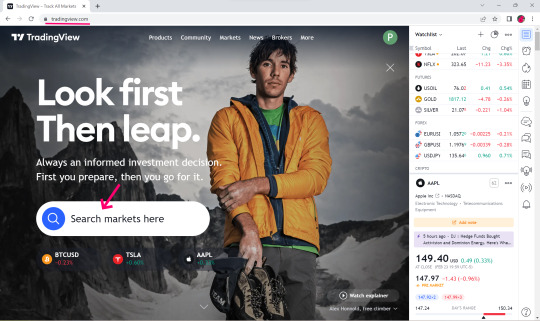
👉Visit TradingView Website.

👉Select Search Market for example NFLX. 👉Click Launch Chart for view.
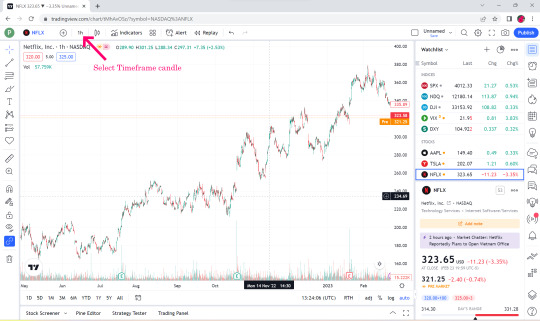

👉Select Time Flame Candle for example 1 hr.
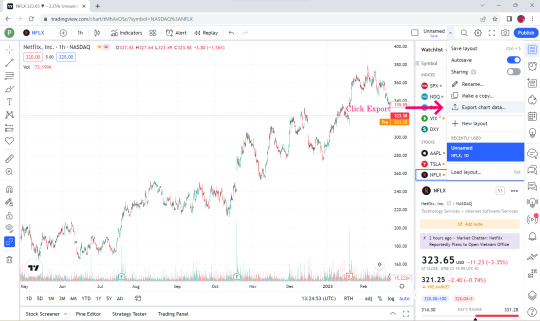
👉Select Export Chart Data.
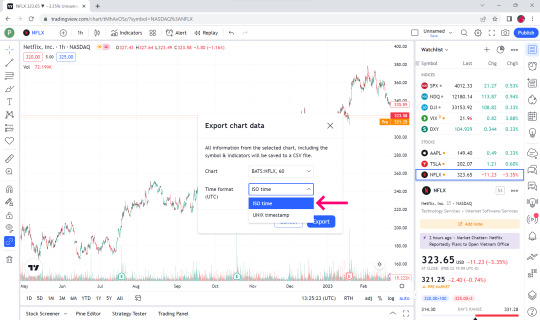
👉In the Time format box, select ISO time.

👉Click Export.

👉Open the downloaded Market data file. You can see that the top bar is date and time, open price, low price, close price, volume and volume MA.
👉S#.Data supports only the first 6 data, the last one volume MA we will not take.
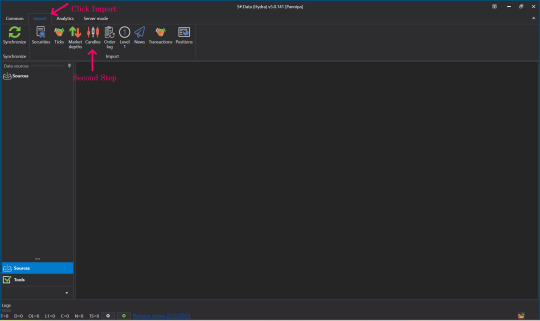
👉Open up your S#.Data Application.
👉Visit our instruction if you doesn't have S#.Data application.
👉How I can get S#.Data
👉Go to S#.Data application, click select import and Click candle.

👉Find the name of the file we just downloaded (btw, you can import by directories as well).
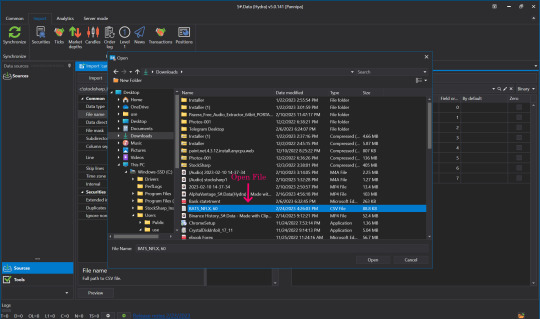
👉Click to select the file that we downloaded, click open.

👉Click to select the time frame to match the timeframe we selected in the file we downloaded initially in the data type field.

👉Setting S#.filed from the Security and Board fields.
👉By default put the Instruments Code that we downloaded. For example NFLX in the Security slot in the instrument board e.g. BATS by default.
👉Enter numbers 0-5 in the date box and so on. Remember - numeration started from 0, not from 1.

👉Skip lines Row 1 cause it contains data columns description.
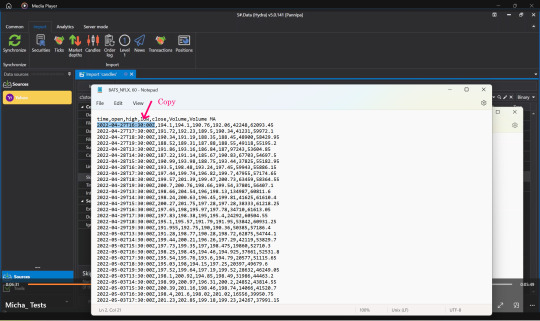
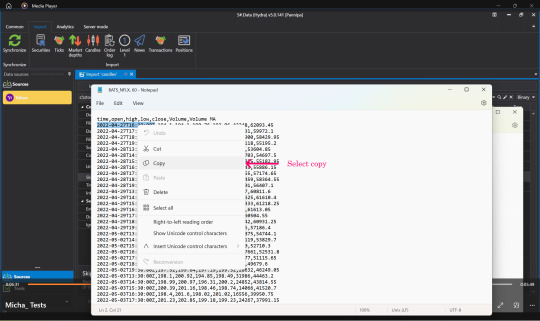
👉Open the file that we downloaded again, select Copy, time, date that we started downloading Market Data.
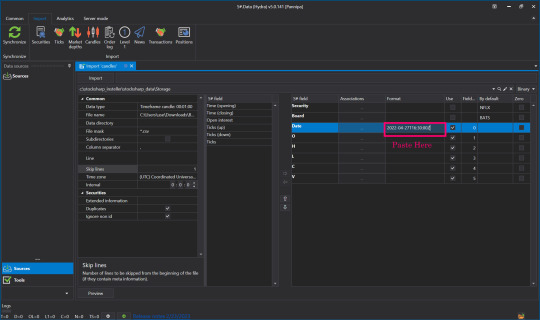
👉Press Paste in the Date Format field.
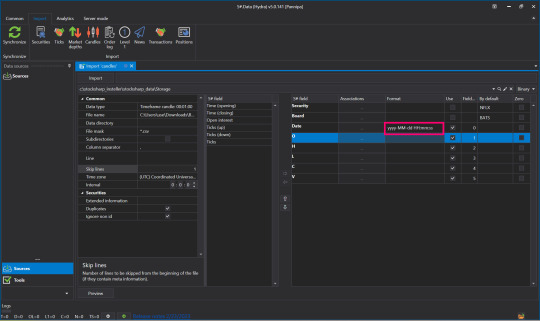
👉Change Numbers to Code Letters By yyyy-MM-dd HH:mm:ss You can read more about format on Microsoft website

👉Once everything is entered correctly, click Preview to double check before importing.
👉When the screen shows this page, there is no problem.
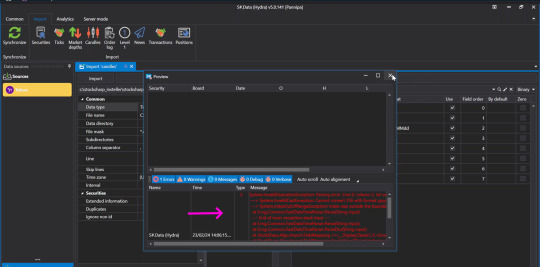
👉But if you press Preview and the screen appears like this, check the details that you have entered again to see if there is any mistake, correct it and press Preview again.
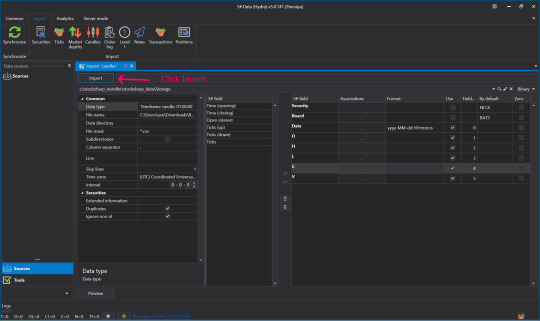
👉Once it's verified and there are no problems, press Import.
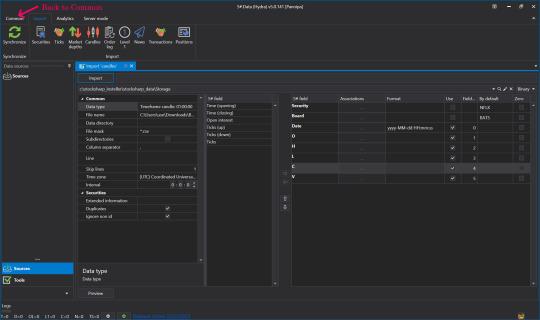
👉When done, click Back to go to Common.
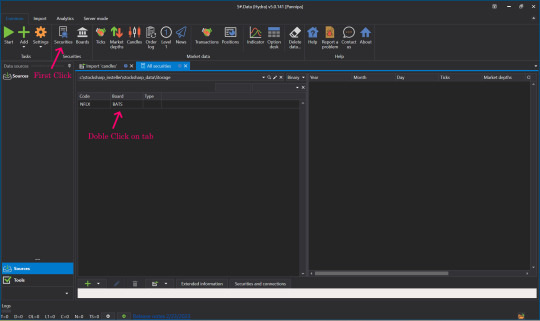
👉Click on our Security.
👉Click on Instrument Tab to view market Data.

👉Now let's see what data was imported. Click Candles.
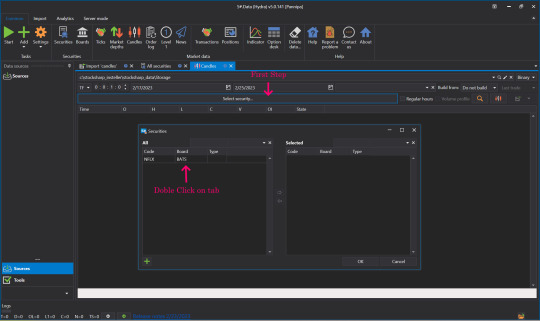
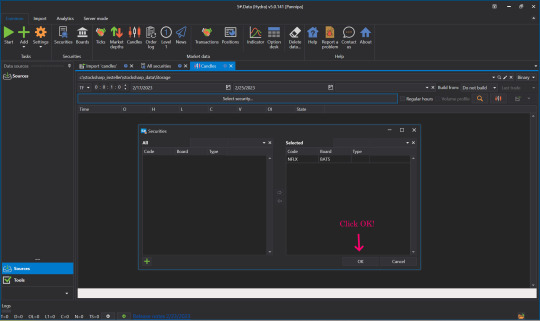
👉Select Security, select the Instrument to view by double-clicking the Instrument Tab, move it to the right side and click OK.

👉Select date and time frame.

👉Click View Market data.
👉Click View Candle Chart to see our candles as a chart.

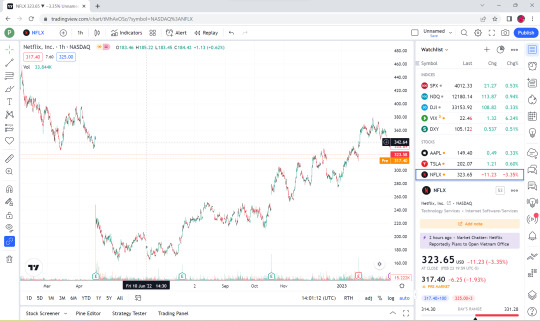
👉This is a Candle Chart comparison between the Chart that was in TradingView website before it was downloaded and the downloaded Chart rendered in S#.Data application.
💥💥Now you know how to import from a CSV file. To make this process you no need to use only limited websites like TradingView. S#.Data supports any format of CSV files that you can download from a variety of sources and websites.
💥Hope this blog is interesting for you. Please comment us what you interesting to know more about S#.Data. We will try to write our next posts.
Sources : StockSharp.com
#downloading of historical market data#import market data#charting platform#export candles#trading view#backtesting#Youtube
1 note
·
View note
Text
0 notes
Text
Access verified Ukraine trade data, import export statistics, customs data, and trading partner insights with Eximpedia’s Exim Data Bank. Start exploring today!
#Ukraine Trade Data#Ukraine trade statistics#Ukraine Import Export Data#Ukraine Trading Partners#Ukraine Customs Data#Ukraine import data#Ukraine Export Data
0 notes
Text
Discover the top 10 export products from India to the USA with detailed India export data. Explore trade trends, shipment values, and how Indian exporters are expanding in the US market.
#export products from india to usa#top 10 export products from india#Indian export data#India Import and Export Data#export import data provider
0 notes
Text
Understanding India’s Trade through Export and Import Data

Discover global trade success with actionable India export import data insights—track trends, seize market opportunities, and grow smarter.
0 notes
Text
The Surge of Mobile Exports from India in 2024

In recent years, India has emerged as a formidable player in the global electronics landscape, particularly in the realm of mobile exports. As of 2024, the Indian mobile export industry is witnessing significant growth, driven by favorable government policies, foreign direct investment, and a burgeoning domestic market. This article explores the current state of mobile export from India, the key players involved, and the implications for the global smartphone market.
Overview of Mobile Exports from India
The mobile export from India has seen a meteoric rise, with projections indicating that exports could exceed $12 billion in value by the end of 2024. This impressive growth can be attributed to several factors, including the government’s "Make in India" initiative and the Production Linked Incentive (PLI) scheme, both designed to bolster domestic manufacturing and attract international investments.
Growth Drivers
Several factors are propelling the growth of mobile exports in India:
1. Government Initiatives
The Indian government has introduced various programs to promote local manufacturing, such as tax breaks, subsidies, and the establishment of electronics manufacturing clusters. These initiatives aim to attract both domestic and foreign manufacturers to set up production facilities in India, which has proven effective in enhancing the mobile export sector.
2. Investment in Infrastructure
Investment in infrastructure has also played a critical role in boosting mobile exports. Improved logistics, reliable power supply, and streamlined regulatory processes make India an attractive destination for mobile manufacturers. This investment is crucial for facilitating large-scale production and ensuring timely exports.
3. Technological Advancements
The rapid advancement of technology has enabled Indian manufacturers to produce high-quality smartphones that meet global standards. Companies are increasingly investing in research and development to innovate and improve their product offerings, further enhancing their competitiveness in the international market.
4. Skilled Workforce
India’s vast pool of skilled labor is another significant factor driving mobile exports. The country boasts a workforce proficient in electronics manufacturing and engineering, enabling companies to maintain high production standards and innovate effectively. This skilled labor force is essential for both domestic and foreign companies seeking to enhance their manufacturing capabilities in India.
Key Mobile Exporters in India
Several major players dominate the mobile export landscape in India, Leading mobile exporter in India are:
1. Apple Inc.
Apple has been a trailblazer in the Indian mobile export sector, establishing manufacturing facilities through its contract manufacturers like Foxconn and Wistron. The production of iPhones in India has not only bolstered local employment but has also significantly contributed to India’s mobile export data.
2. Samsung Electronics
Samsung operates one of the largest smartphone manufacturing plants in Noida, where it produces a wide range of devices, from budget models to flagship smartphones. The company has ramped up its export operations, making it a critical player in the Indian mobile export market.
3. Xiaomi
Xiaomi has rapidly gained a significant market share in India, thanks to its affordable smartphones. The company has invested heavily in local manufacturing, exporting a considerable volume of devices to countries across Southeast Asia and Africa.
4. Vivo and Oppo
Both Vivo and Oppo, Chinese smartphone manufacturers, have established substantial production facilities in India. They focus on catering to the growing demand for mid-range smartphones, further enhancing India’s export capabilities.
5. Lava International
As a homegrown brand, Lava International has also made strides in mobile exports. The company primarily targets budget-conscious markets, exporting feature phones and affordable smartphones to various countries.
Analyzing Mobile Export Data
The mobile export data for 2024 indicates robust growth, with significant exports to key markets including:
1. North America
India has become an essential supplier of smartphones to North America, with Apple’s production in India catering to a large portion of the U.S. market. This trend is expected to continue as more brands establish manufacturing operations in India.
2. European Union
Countries in the EU, particularly Germany and the UK, have seen increased imports of Indian-manufactured smartphones. Samsung and Xiaomi lead this charge, exporting a diverse range of devices to meet consumer demand.
3. Southeast Asia
Indian smartphone manufacturers are tapping into the growing demand in Southeast Asian countries like Indonesia, Vietnam, and Thailand. Competitive pricing and quality have made Indian smartphones increasingly popular in these regions.
4. Middle East and Africa
The demand for affordable smartphones in the Middle East and Africa has surged, making these regions vital markets for Indian manufacturers. Brands like Lava and Xiaomi are successfully exporting budget-friendly smartphones, addressing the needs of price-sensitive consumers.
Understanding Mobile Phone HS Code
The Harmonized System (HS) code plays a crucial role in facilitating international trade. The mobile phone hs code is 8517.12, which covers smartphones capable of connecting to cellular networks. Accurate classification using the HS code is essential for mobile exporters in India to ensure compliance with customs regulations and to expedite the export process.
Conclusion
The mobile export landscape in India is poised for significant growth in 2024, with the country solidifying its position as a key player in the global smartphone market. Supported by government initiatives, foreign investments, and a skilled workforce, India is well-equipped to meet the growing demand for mobile devices worldwide.
As Indian manufacturers continue to innovate and expand their production capabilities, the outlook for mobile exports remains positive. By leveraging its strengths and addressing challenges, India can capitalize on its position in the global supply chain, ensuring sustainable growth and economic benefits for years to come. The future of mobile exports from India is bright, and the country is set to make its mark on the international stage. However if you need the list of smartphone exports by country, mobile phone HS code or global trade data connect with import and export data provider platforms like Seair Exim solutions.
Post By:
Seair Exim Solutions
Phone No.: 099900 20716
Address: B1/E3 Mohan Cooperative Industrial Estate Near Mohan Estate Metro Station Opposite Metro Pillar No:-336, NH-19, New Delhi, Delhi 110044
Also Read : A Comprehensive Guide to Garment Exports from India in 2024
#global trade data#international trade#export#trade data#trade market#global market#import export data#mobile#mobile export data#mobile hs code#mobile export#mobile exporter#mobile market#mobile industry#mobile trade
2 notes
·
View notes
Text
Access Indonesia import export data, trade stats, and shipment records. Discover top traded products and market trends with Seair Exim Solutions.
#indonesia import data#indonesia trade data#indonesia import and export data#Indonesia Shipment data#indonesia import export data#indonesia export and import statistics#indonesia export data
0 notes